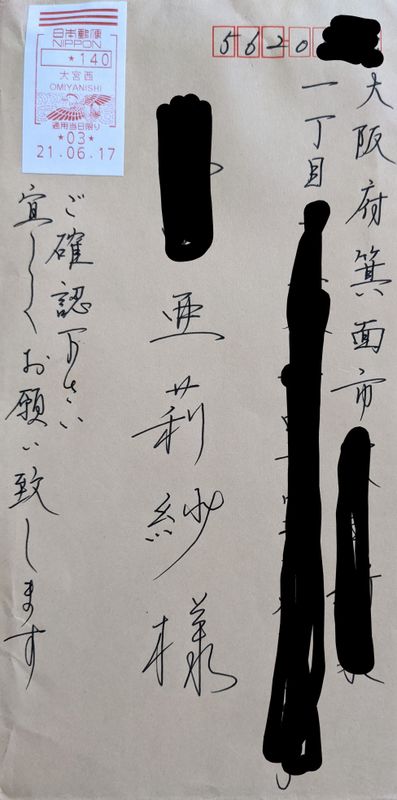Jul 28, 2021
How to Address Envelopes with Japanese Honorifics

In Japan, almost everything about addressing envelopes is backwards from what I'm used to. The country, if international post, comes first. (I write this in Japanese plus in English.) When I send letters overseas, I write the address horizontally, as JP staff will only check which country to send it off to and postage.
For domestic mail, the seven digit postal code goes into the boxes printed onto the envelope (as shown in the photo) or at the top.
Next comes (usually written vertically) prefecture, city, neighborhood, block and building number, in that order.
If necessary the building name, room number, and floor if it is an office or retail building is added.
The addressee comes last but is usually written a little larger than the address.
After the addressee's name on the envelope there is an honorific attached. There are a lot of these but they can kind of be separated into two types: addressed to an individual or a group.
Individuals
Most frequently, for individuals, you should use 様 (sama). Same goes for in the letter contents and after someone's name in a polite email.
先生 (Sensei) is used instead for both teachers and any medical doctors and dentists, including those with doctorate degrees working in the research field.
Less frequently used, unless you work in an office:
社長 (Shachou) is used for the boss of a company, 部長 (buchou) for a department head.
If addressed to the school principal, use the school name, principal's name, 校長先生 (koucho sensei).
(先輩 (Senpai) might be used for colleges or students who are older than you in the letter, but not on the envelope.)
行 (gyou) is used when self addressing envelopes. For example when posting tax documents and expecting stamped documents in return. The office will send the documents in the provided envelope, likely after crossing out gyou and replacing it with sama.
宛 (Ate) is like above, used for self addressed when you are a teacher, doctor, etc.
殿 (Tono) is sometimes still used (I have yet to see it) but is not common, as it can be translated to “Lord” so it sounds kind of too formal or old fashioned these days.
Groups
御中 (Onchuu) is used for companies when there is not a specific person it's going to.
This shouldn't be used after a person's name, so if you want the department/project leader to get the mail but don't know their name, it can be addressed: Company name, Department name, person in charge (ご担当者), sama.
Likewise, if it the letter is addressed to the company president, the order should be: Company name, (Department) President, Name, sama.
(This order is placing the company name and title of president or team leader as a priority above the individual's name.)
For addressing to multiple people or the members of a group rather than an individual or the business in general, use 各位 (kakui), which is similar in meaning to 皆様 (mina sama) in conversation.
PS: The return address goes on the back of the letter, and no honorifics are used after your own name.



0 Comments